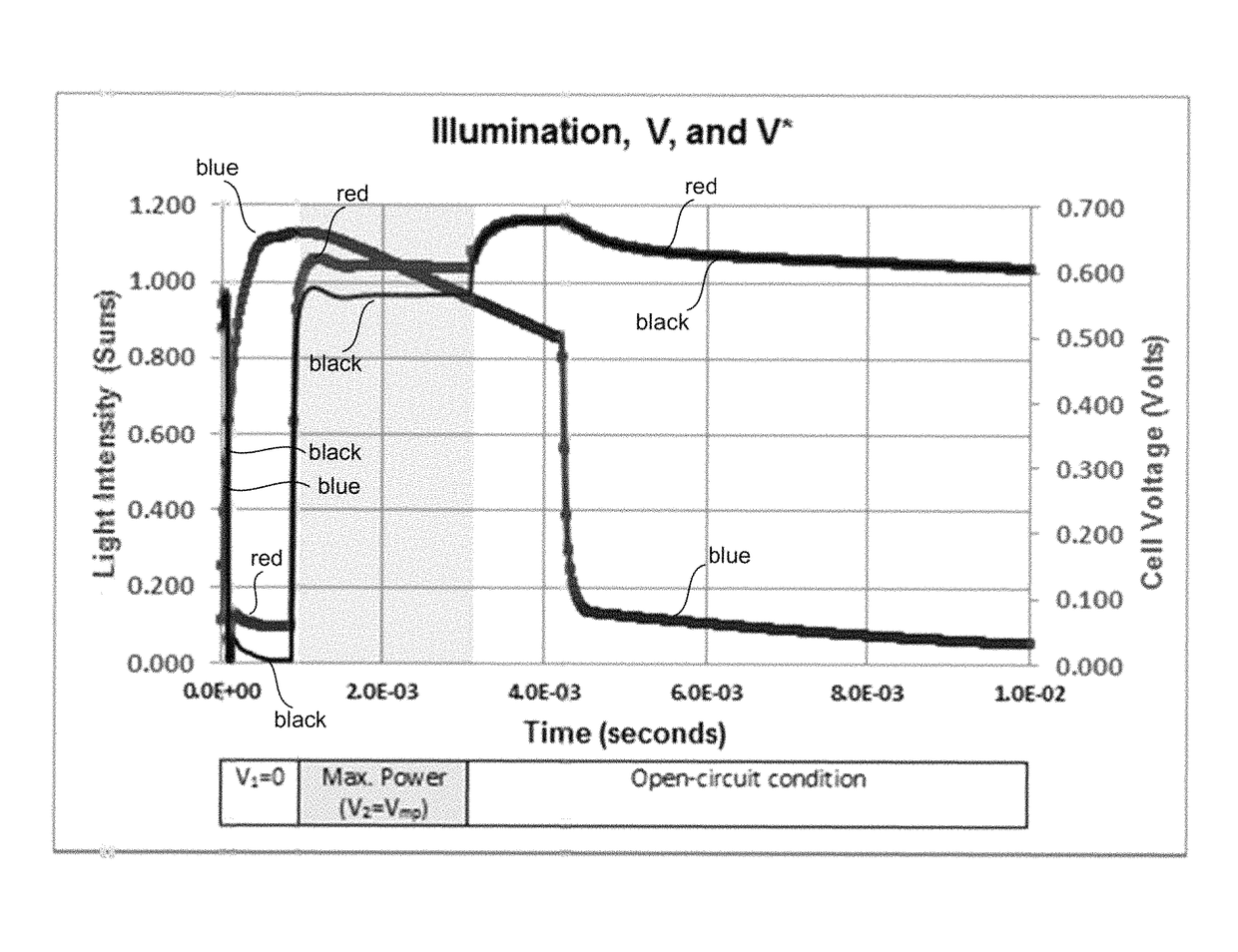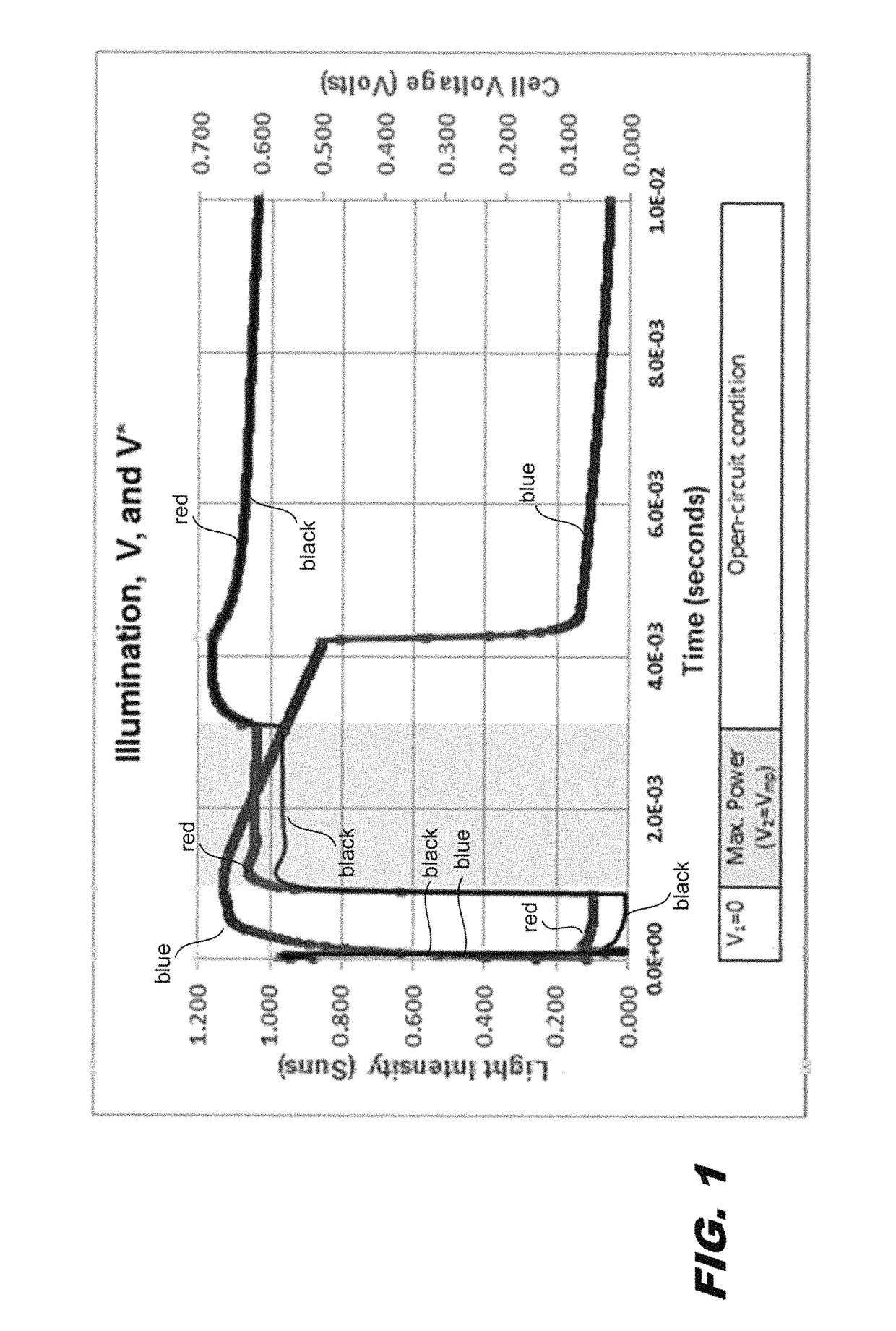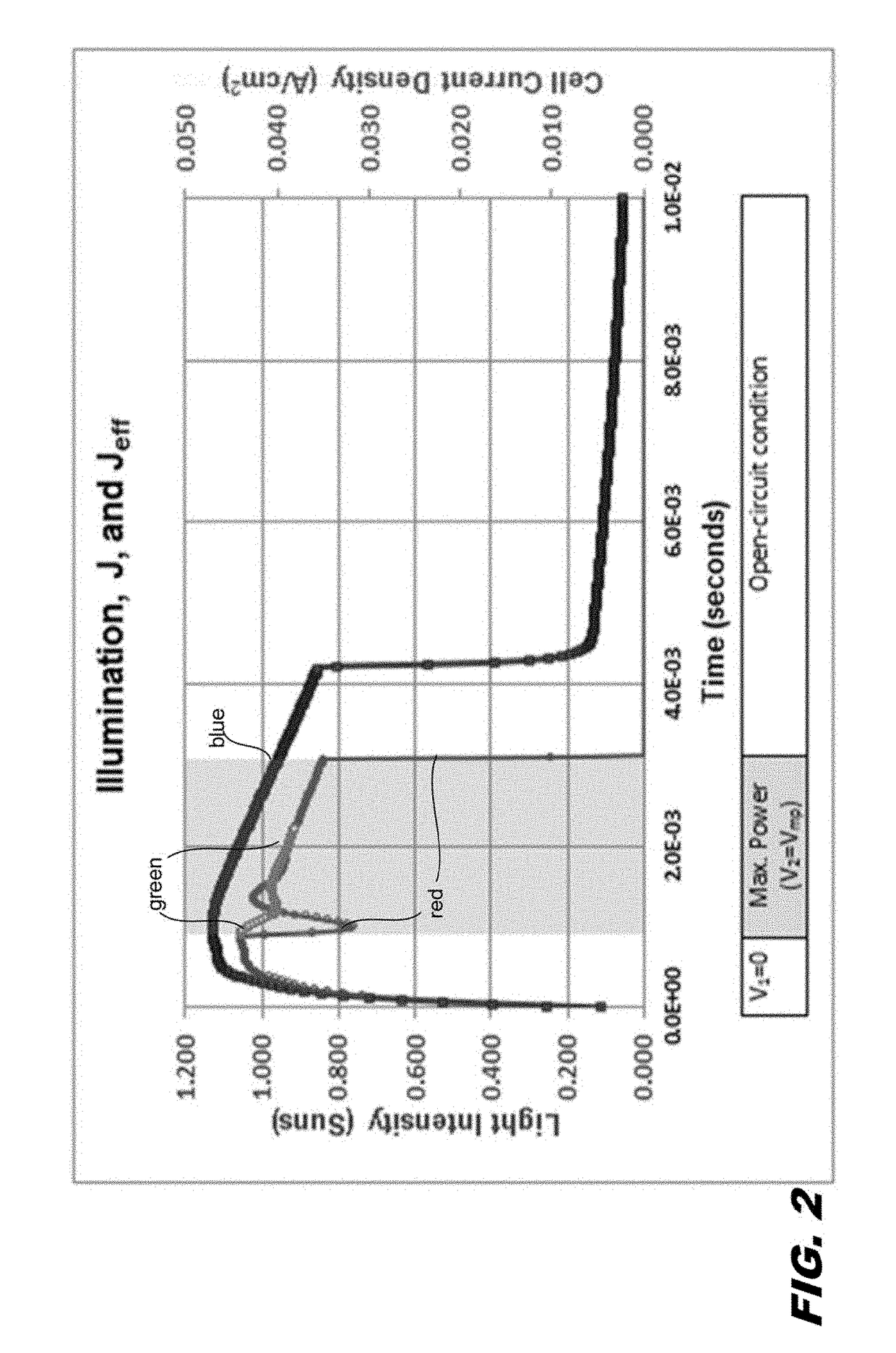Characterization of substrate doping and series resistance during solar cell efficiency measurement
a solar cell and series resistance technology, applied in the field of solar cell testing, can solve the problem of not having a complete device physics characterization
- Summary
- Abstract
- Description
- Claims
- Application Information
AI Technical Summary
Benefits of technology
Problems solved by technology
Method used
Image
Examples
Embodiment Construction
[0020]The following publications are hereby incorporated by reference: [1] Ronald A. Sinton, Possibilities for Process-Control monitoring of Electronic Material Properties during Solar Cell Manufacture, 9th Workshop on Crystalline Silicon Solar Cell Materials and Processes, NREL NREL / BK-520-26941, pp. 67-73, August, 1999; [2] R. A. Sinton and A. Cuevas, A quasi-steady-state open-circuit voltage method for solar cell characterization, Proc. of the 16th European Photovoltaic Solar Energy Conference, Glasgow, UK, 2000; [3] M. J. Kerr, A. Cuevas, R. A. Sinton, Generalized analysis of quasi-steady-state and transient decay open circuit voltage measurements, Journal of Applied Physics, AIP, 2002; [4] William Shockley, Electrons and Holes in Semiconductors, D. Van Nostrand Company, NY. 1950 pp. 312; and [5] U.S. Pat. No. 7,696,461.
[0021]Measurement of short-circuit current, maximum power, and open-circuit voltage is shown in FIG. 1. FIG. 1 shows intensity vs. time (blue), compared to the m...
PUM
 Login to View More
Login to View More Abstract
Description
Claims
Application Information
 Login to View More
Login to View More - R&D
- Intellectual Property
- Life Sciences
- Materials
- Tech Scout
- Unparalleled Data Quality
- Higher Quality Content
- 60% Fewer Hallucinations
Browse by: Latest US Patents, China's latest patents, Technical Efficacy Thesaurus, Application Domain, Technology Topic, Popular Technical Reports.
© 2025 PatSnap. All rights reserved.Legal|Privacy policy|Modern Slavery Act Transparency Statement|Sitemap|About US| Contact US: help@patsnap.com



